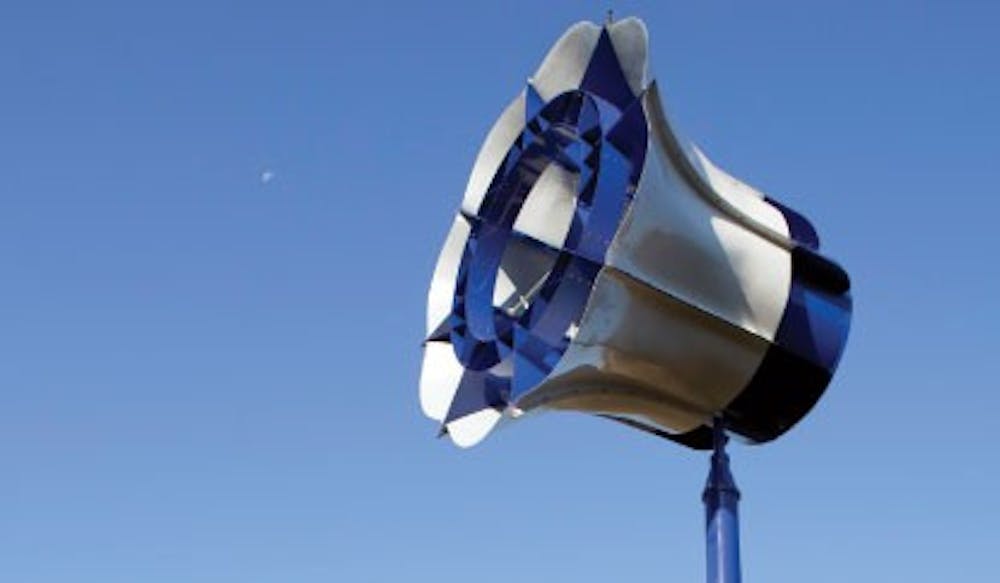
Miami University’s first wind turbine generates power for the Ecology Research Center and funds for the university. (CONTRIBUTED PHOTO)
While high winds in Oxford have recently become newsworthy, another type of wind is having a much more beneficial impact on the Miami University community.
Located at the Ecology Research Center (ERC), adjacent to the university on Sommerville Road, stands Miami's first wind turbine, which is capable of producing power with winds as low as 5 mph.
According to David Prytherch, associate professor of geography and Miami's sustainability coordinator, the 37-foot wind turbine is a direct result of the Miami University Revolving Green Fund (MURGF).
The fund originally had $50,000 and the turbine was the first application received by the MURGF, according to Prytherch. The turbine cost between $14,000 and $19,000.
Prytherch said MURGF provides funding to projects that promote sustainability, assist in reducing Miami's carbon footprint and generate a collaborative environment between students, faculty and staff.
"There was an application from a group of engineering students in Dr. Alquist's pollution prevention course who were interested in doing a project on a wind turbine," Prytherch said. "Simultaneously, the ERC was interested in building a wind turbine. The students collaborated with the ERC to develop the proposal."
While there are many requests to promote sustainability and alternative energy on campus, Prytherch said some suggestions are difficult to justify on a cost-saving basis.
According to Prytherch, the wind turbine is the first project funded by the MURGF and is ideal for Miami because it generates a significant portion of the energy used by the ERC and has the potential to make a profit.
"When the turbine generates more electricity than the ERC uses, it goes back on the grid," he said. "The ERC has a meter that measures how much energy they consumed and how much is generated by the turbine. Once the turbine generates more energy than is needed by the ERC, they can sell the electricity to Duke or other energy companies."
According to Prytherch, the turbine will eventually pay for itself, and is currently producing enough electricity to power a domestic household.
Enjoy what you're reading?
Signup for our newsletter
Prytherch said another beneficial aspect of the turbine is the learning curve it establishes at the university, because it is the first turbine ever at Miami.
Miami sophomore Amanda Brigham said the wind turbine is not only a great learning experience, but also a remedy for Miami's past green ratings.
"I think it's great that we have a turbine because Miami has never scored particularly high on cleanliness or ‘green' ratings," Brigham said. "Hopefully the winds are adequate for it to work well and the location is not in the path of birds."
According to Prytherch, there is significant research that can be conducted in relation to the turbine and its capabilities.
"Miami will learn a lot from the wind turbine through its operation, maintenance and technology," he said. "Data will be generated online and publicly accessible."
Prytherch said the turbine reduces Miami's carbon footprint and is a perfect example of what projects funded by the MURGF can achieve.




